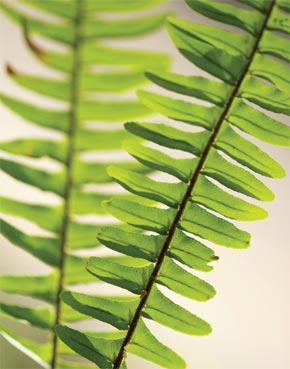Q. My wife bought a pale, lavender Clematis vine last summer and planted it along a south-facing fence. The new growth is on the top three to four inches of a seven-foot long, pencil thin stem that’s burned to boot. Should we cut it down really short and hope for the best next spring?
A. I wouldn’t be overly concerned now, as the foliage probably has turned yellow, as the plant has gone dormant. While dormant, prune off all the growth at the base. This can be done now or you can wait until March. You should select the time that’s most convenient for you. Most Clematis varieties are deciduous, so they drop their leaves and the new growth emerges from the base in the spring. There are two varieties, Armandi and Avalanche, that are evergreen with white flowers. Clematis thrives in a southern exposure as long as its roots are kept cool, moist and insulated from the afternoon sun, June through September. The roots should be shaded during the heat of the day but it’s okay for the foliage to be in the sunny afternoon exposure. A two-inch layer of mulch is the recommended method of protecting the surface roots. It should be spread evenly from the trunk to beyond the drip line. This is especially important when the temperatures are over eighty-five degrees. This may explain the scorching or burnt stems last year. Also, the lack of vegetation will expose the stems to sunburn on those very hot days. A good balance fertilizer provides the nutrients necessary to encourage the growth through out the growing season. I’d make my first application after pruning and follow up with regular repeat applications. You may need to transplant the Clematis if the present location isn’t adequate. This can be also done in March or earlier. Clematis is watered three times a week and more often when the temperatures are over eighty-five degrees. They do not develop large thick stems like other vines so the pencil thin stem(s) is typical. Deciduous plants big advantage over evergreens is that they shed all the mistakes from the pervious year. So, you start fresh with the new year.
 Q: I have a nice sized Boston Fern but I found on the back of a single frond these perfect dots the other day. They’re a rusty, brown color and in perfect rows. I’ve removed the frond. What are they and how do I prevent it from reoccurring?
Q: I have a nice sized Boston Fern but I found on the back of a single frond these perfect dots the other day. They’re a rusty, brown color and in perfect rows. I’ve removed the frond. What are they and how do I prevent it from reoccurring?
A. Ah, Mother Nature is wonderful. What you were witnessing is the beginnings of the plant’s reproductive cycle. Unlike other plants that produce seed, ferns produce spores. The spores are the reddish brown dots; however, they’re sterile so they will never produce new plants. This is typical on many varieties of ferns. Tissue culture and/or plant divisions are the primary method of reproducing ferns. The sterile spores have an aesthetic value so I wouldn’t remove the fronds. Besides, they’re going to continually form naturally anyway.
Buzz Bertolero is Executive Vice President of Navlet’s Garden Centers and a California Certified Nursery Professional. His web address is www.dirtgardener.com and you can send questions by email at dirtgarden@aol.com or to 360 Civic Drive Ste. ‘D’, Pleasant Hill, Calif. 94523
Leave a Reply